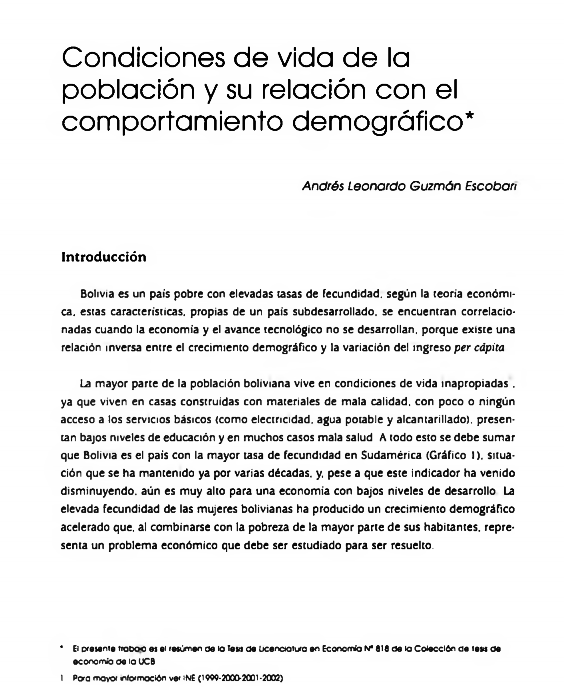Living conditions of the population and its relation to demographic behavior
DOI:
https://doi.org/10.35319/lajed.20054274Keywords:
Poverty, Fertility, Population Growth, DevelopmentAbstract
Bolivia is a poor country with high fertility rates; according to economic theory, these characteristics, typical of an underdeveloped country, are correlated when the economy and technological progress are not developed, because there is an inverse relationship between population growth and per capita income variation.
Most of Bolivian population lives in unsuitable living conditions, since Bolivians live in houses built with poor quality materials, with little or no access to basic services (such as electricity, drinking water and sewage), have low levels of education and in most cases poor health. Bolivia is also the country with the highest fertility rate in South America, a situation that has remained constant for several decades, and, although this indicator has been decreasing, it is still very high for an economy with low levels of development. The high fertility of Bolivian women has produced an accelerated demographic growth that, when combined with the poverty of most of its inhabitants, represents an economic problem that must be studied to be solved.
Downloads
References
Cancico Alvarez, Miguel. 2002. "Análisis de la obra de Lomborg, Simon, Sala i Martin y otros sobre el catastrofismo ecologista". España: Universidad de Santiago deCompostela.
Gujarati, D. 1997. Econometria. Bogotá: Mac Graw Hill. Tercera Edición
Instituto Nacional de Estadística (INE) 1999-2000-2001- 2002. Encuesta continua de hogares EHC-MECOVI. La Paz
Kahn, H. 1979. World Economic Development: 1979 and beyond. Westview Press






